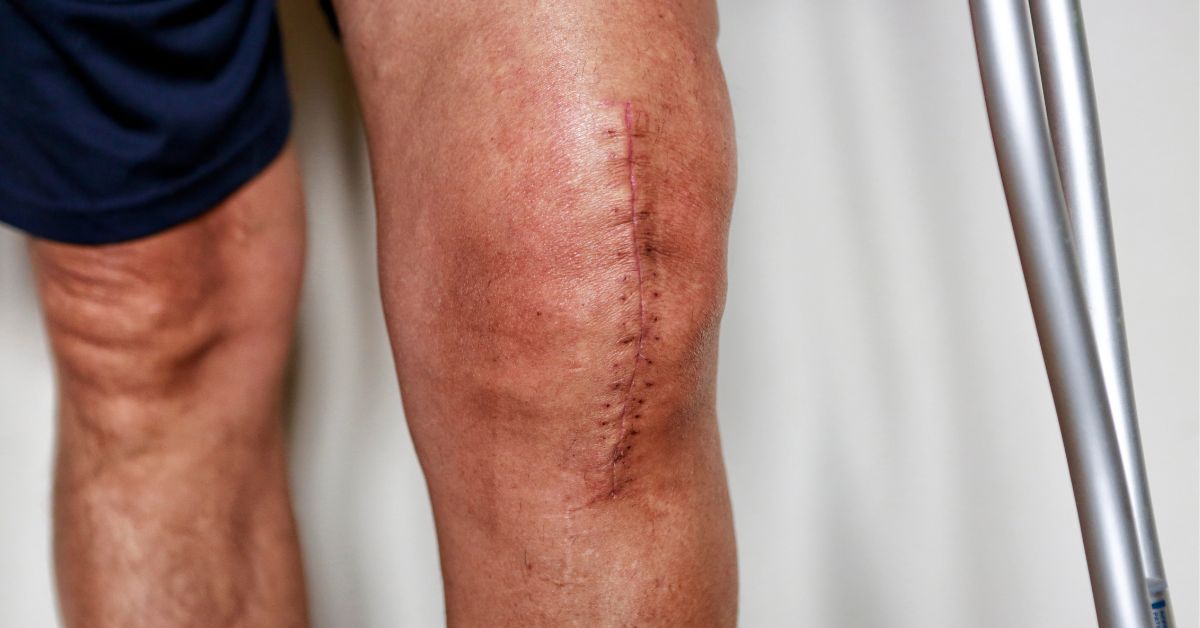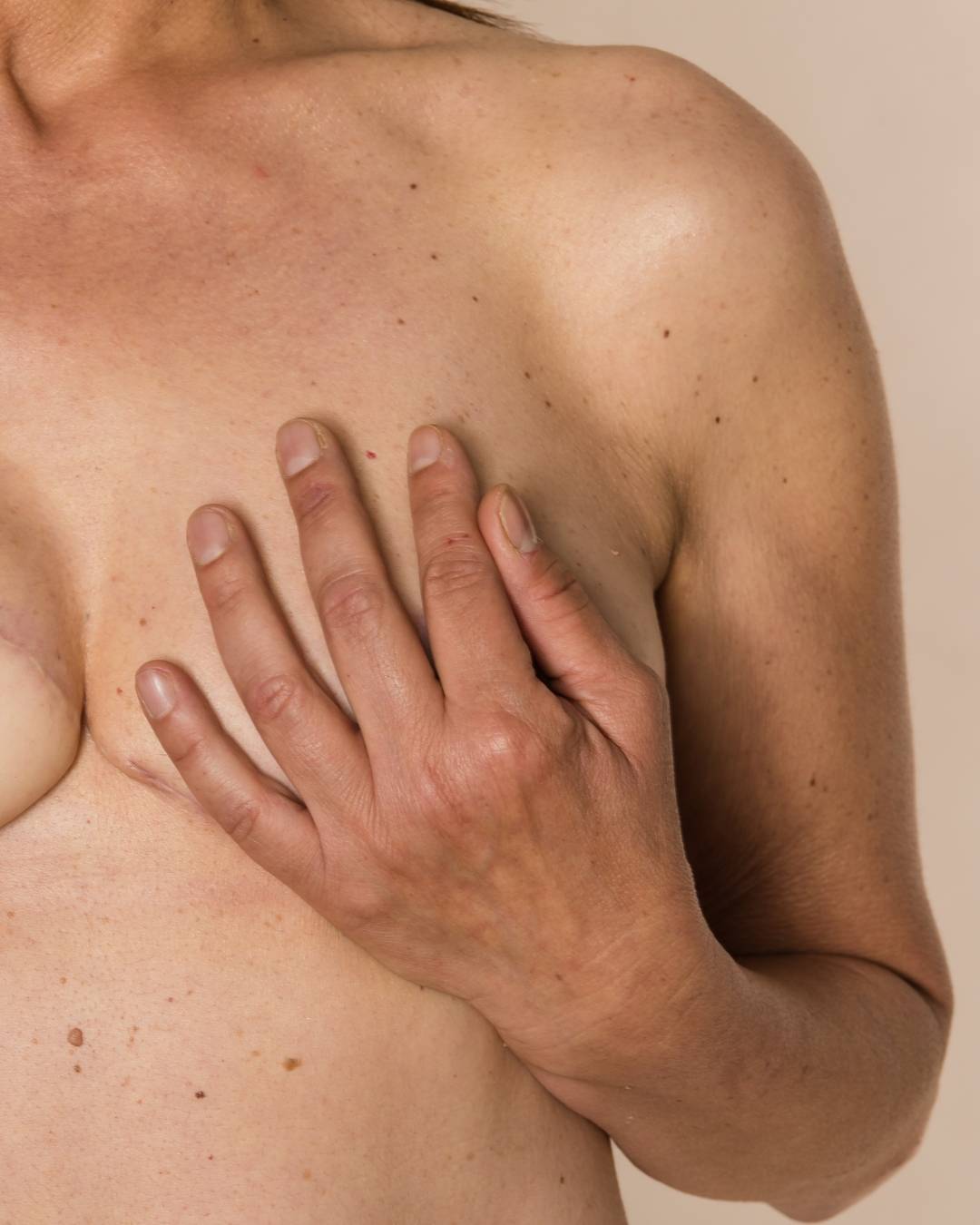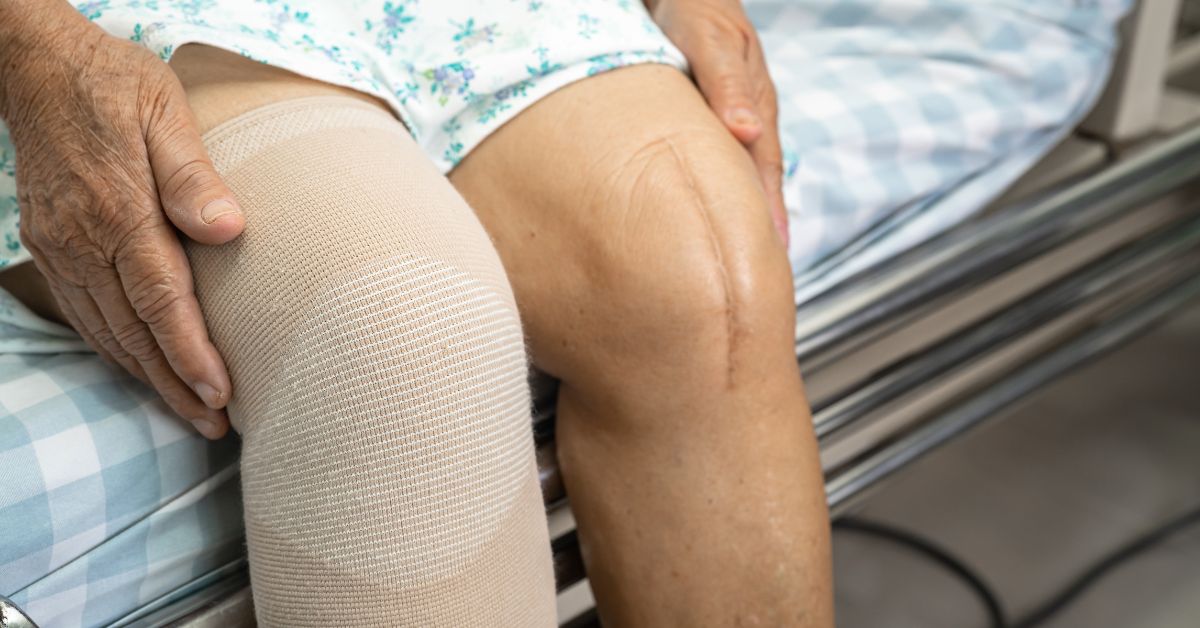After surgery, some degree of swelling is completely normal and expected as part of your body’s natural healing response. However, persistent or worsening swelling can sometimes become concerning. It might indicate an infection or a chronic condition called lymphedema.
So, when should you worry about swelling after surgery? Here’s everything you need to know about the healing process to understand when swelling is normal, when it requires medical attention, and how to prevent long-term complications.
What Causes Swelling After Surgery?
Post-surgery swelling is common. Surgery disrupts your body’s normal fluid balance, so don’t get automatically alarmed if you notice swelling around the surgical site.
Here’s why fluid buildup might occur:
- Inflammatory Response: Your body sends extra fluid and immune cells to the surgical area to help with healing. This natural process causes swelling that usually peaks 2-3 days after surgery and gradually improves as you recover.
- Disruption of Lymphatic Vessels: During cancer surgeries, such as a mastectomy, lymph nodes and vessels that normally drain fluid are often removed or damaged. When these drainage pathways are disrupted, fluid can build up in the surrounding tissues.
- Limited Mobility: When you rest after surgery, you move less than usual. Movement helps pump fluid through your body, so being less active can cause fluid to collect in areas like your hands, feet, or the surgical area.
- Extensive Surgery: Larger or longer surgeries cause more tissue trauma and swelling. The more extensive your procedure, the more swelling you can expect during recovery.
- Seroma: Sometimes, clear fluid collects in empty spaces where tissue was removed during surgery. This fluid-filled pocket, called a seroma, often happens after breast cancer and abdominal surgeries.
Most of the time, swelling is a sign that your body is working to heal itself. Most normal post-surgical swelling will gradually improve as inflammation decreases and your lymphatic system adapts.
How Long Is Too Long for Swelling After Surgery?
It depends on the type of surgical procedure that you had.
Most surgical swelling improves within 2-3 weeks after your procedure. For major surgeries, mild swelling can last up to 3-6 months, especially if you had lymph nodes removed. Your doctor should give you an estimate on when you can expect your post-operative swelling to go down.
You might also be interested in: Swelling Under Armpit: Why It Happens & What to Do
When Should You Worry About Swelling After Surgery?
Most post-surgical swelling is normal and will gradually improve. However, certain warning signs mean that you should get medical attention as soon as possible. Here’s when swelling might signal a problem.
Pain and Discomfort
Some discomfort around your surgical site is expected. But if you have severe pain or if mild pain suddenly becomes worse, call your doctor. Pain that increases rather than decreases over time, especially when combined with swelling, can indicate infection or other complications.
Warmth and Redness
Slight warmth and pinkness near your incision are normal during initial healing, but increasing redness, significant warmth, or red streaks spreading outward from the area are concerning signs. These symptoms often indicate infection, especially if you also have a fever.

Severe Swelling
If swelling becomes much worse over a short period (hours or overnight), appears suddenly in an area that wasn’t swollen before, or feels tight and painful, seek medical attention. Sudden severe swelling can mean bleeding, infection, or, in rare cases, a blood clot or deep vein thrombosis.
Chronic Swelling
Swelling that persists beyond what’s expected for your recovery process or appears months after surgery might be a sign of lymphedema, a chronic condition that causes swelling in arms, legs, and other parts of the body.
Early intervention for lymphedema can prevent it from getting worse. Sometimes, it’s even possible to naturally reverse the swelling.
Post-Surgery Swelling vs. Lymphedema
Lymphedema is different from the normal swelling you experience right after surgery. It’s a chronic condition that happens when your lymphatic system is damaged and can’t move fluid properly. It creates persistent swelling that doesn’t go away on its own.

Lymphedema often develops after cancer surgeries where lymph nodes were removed, especially with breast cancer, melanoma, and gynecological cancers. It can affect arms, lower legs, and even your neck or face.
It’s estimated that 20% of people will develop arm lymphedema after breast cancer treatment that involves surgery to remove lymph nodes or radiotherapy to the lymph nodes.
The more lymph nodes removed, the higher your risk for developing this condition.
Lymphedema can appear months or even years after your surgery. You can recognize it by:
- Swelling that doesn’t improve overnight with elevation
- A feeling of heaviness or fullness in the affected area
- Tight-feeling skin or clothes/jewelry that no longer fit
- Decreased flexibility in nearby joints
- Hardening of the tissues over time
If you notice these signs, especially in an arm or leg on the same side as your cancer surgery, talk to your healthcare provider. Early treatment can help manage lymphedema and prevent it from getting worse.
How to Manage Swelling after Surgery
Managing swelling can reduce inflammation and make you more comfortable.
Ice Packs
Cold therapy reduces blood flow to the surgical area, which helps decrease inflammation and swelling. Apply ice packs to your swollen area for 15-20 minutes at a time, several times a day. Always wrap ice in a thin towel to protect your skin, and never place ice directly on your incision or bare skin.
Ice and cold compresses work best in the first 72 hours after surgery.
Elevation
Keeping the swollen area elevated above the level of your heart uses gravity to help drain excess fluid. If your arm is swollen, try propping it on pillows while you sit or sleep. For leg swelling, lie down and place your leg on a few pillows.
Aim for at least 30 minutes of elevation several times per day or follow your doctor’s advice.
Compression Garments
Compression applies gentle pressure to help push excess fluid out of the swollen area. Your doctor might recommend compression stockings, sleeves, or wraps depending on which part of your body is affected. These garments should feel snug but not painful.
Follow your doctor’s instructions about how long to wear them each day.
Here are the compression products I recommend!
Physical Therapy
A physical therapist specializing in post-surgical recovery or lymphedema can teach you specific exercises and manual techniques to reduce swelling. These gentle movements help stimulate your lymphatic system and improve fluid drainage.
Physical therapy is especially important after cancer surgeries with lymph node removal or when you have significant swelling.
You can find physical therapy exercises to reduce swelling in these printable guides:
- Exercises for Leg Swelling and Lymphedema
- Exercises for Arm and Chest Swelling and Lymphedema
- Exercises for Head and Neck Swelling and Lymphedema
- Exercises for Abdominal and Trunk Swelling and Lymphedema
- Seated Exercises for Ankle Tightness and Swelling
- Seated Exercises for Knee Tightness and Swelling
- Hand Joint Pain and Swelling Exercises
Regularly doing these physical therapy exercises can help reduce swelling as you heal, as well as prevent complications like lymphedema.
What Happens If Swelling Doesn’t Go Down?
Normal post-surgical swelling should go down as your body heals. You’ll typically notice it getting better week by week. If your swelling isn’t getting better (or is getting worse), it means that your body is struggling with the healing process, and there might be something else going on.
The most common causes include:
- Infection: When bacteria enter your surgical wound, they trigger inflammation that causes more swelling, along with redness, warmth, and pain.
- Lymphedema: If lymph nodes were removed during your surgery, your body may have trouble draining fluid properly. This can lead to chronic swelling that needs specialized treatment.
- Seroma: Fluid collections can sometimes persist after surgery, especially after breast or abdominal procedures.
- Medication Side Effects: Some medications can cause excessive swelling as a side effect.
The sooner you address persistent swelling, the better your outcome will likely be. This is especially true for lymphedema, where early intervention can prevent the fluid buildup from becoming severe or permanent.
You can find more support in Breast Cancer Rehab and Lower Body Lymphedema Rehab.
FAQs
When should I worry about swelling after knee surgery?
Knee swelling is common after knee surgeries, but you should contact your doctor if your knee swelling doesn’t begin to improve within 7-10 days, or if it suddenly gets worse. Be especially concerned if your knee becomes very warm, red, extremely painful, or if you develop a fever. Watch for severe swelling that makes it impossible to bend your knee or bear weight on your leg. Also, pay attention if the swelling extends far below your knee into your calf, as this could signal a blood clot.
When should I worry about swelling after ankle surgery?
Ankle swelling can persist for longer than other types of swelling because of gravity and the ankle’s distance from your heart. Contact your doctor if your swollen feet or ankles are accompanied by severe pain, warmth, redness, or fever. Sudden swelling that extends up your calf or causes significant pain when you flex your foot is also something that you should get medical attention for.
Does walking reduce swelling after surgery?
Yes, gentle walking can help reduce swelling after many types of surgery by activating your muscle pump system. When your muscles contract and relax during walking, they squeeze nearby blood vessels and lymphatic vessels and improve circulation, helping move fluid out of swollen areas. However, you should only start walking when your surgeon gives you the green light.
Is swelling good or bad for healing?
Some swelling is a normal response and a necessary part of healing. The inflammatory phase (which sounds scary, but is a normal part of recovery) brings healing cells and nutrients to the surgical site. But excessive swelling or swelling that gets worse over time isn’t normal or good for healing. If your swelling increases suddenly or comes with redness, pain, or warmth, it’s a sign to seek help from a medical professional.
How long does it take for swelling to completely go away after surgery?
It depends. If you had a minor procedure, the swelling should typically go away after just a couple of weeks. Major surgeries, especially those involving lymph node removal, can have some degree of swelling for 3-6 months or longer. Your doctor should give you a timeline on when to expect the post-surgery swelling to start going down.
How do you know if swelling is serious?
Most of the time, swelling after surgery is normal and can be improved with time, elevation, compression socks or sleeves, and physical therapy exercises. However, watch out for swelling that’s accompanied by significant pain, fever, redness, warmth, or red streaks. Sudden increased swelling, especially overnight or within hours, needs medical attention, too. Persistent arm or leg swelling that doesn’t improve at all over weeks could also be a sign of lymphedema.
The Bottom Line
Most of the time, swelling is your body’s natural response to healing after surgery. It should improve with elevation, compression, and physical therapy exercises. Your doctor may also recommend pain medications if the fluid accumulation is too uncomfortable.
However, persistent or severe swelling, especially when accompanied by pain, redness, or fever, requires medical attention. If you had a cancer surgery with lymph node removal, awareness of lymphedema risk and early intervention are particularly important for long-term health and quality of life.











